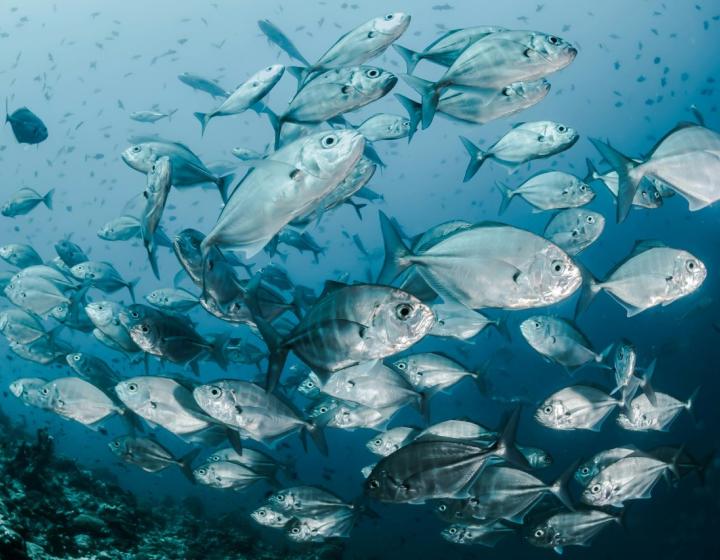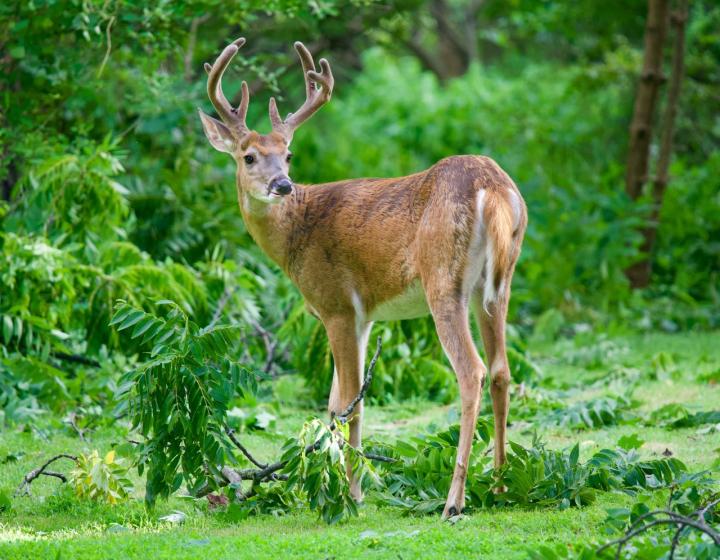Student blog: An interdisciplinary approach to neotropical river otter conservation in Brazil
otter-pic-crop.jpg
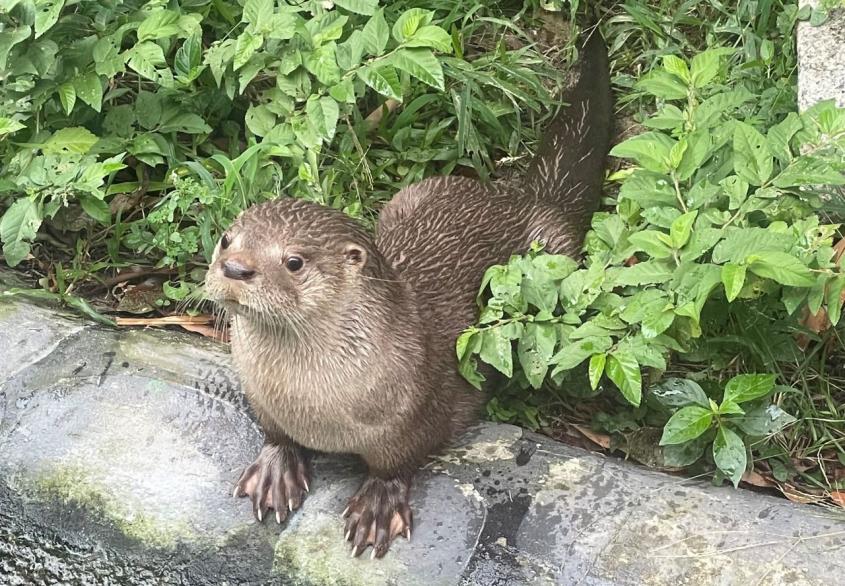
A neotropical river otter (Lontra longicaudis) housed at Projeto Lontra. Photo: Erin Guntrum
I had never heard of Santa Catarina — an island in one of the most southern states of Brazil. It is known colloquially as Ilha da Magia (magic island) for its incredible beauty and folklore passed down by the native Manezinho people. But when I came across the work of Projeto Lontra, I was excited for the opportunity to pursue research that combined my veterinary studies, love of otters, and passion for behavioral research. With the support of the College of Veterinary Medicine’s Expanding Horizons Program and a research site established, I began reviewing literature, refining my official research plan, and learning as much Portuguese as I could. Before I knew it, the months of planning had become a reality and I was on my way to Brazil.
The majority of my time was spent on the foundational research required to generate key information on neotropical river otters that would allow researchers and veterinary staff to identify individuals who are at greater risk for disease or degenerative conditions even in the absence of illness or clinical signs. Ultimately, the goal would be to generate allostatic load indices — a scientific rubric based on a body of data — for all species being kept in captivity to maintain healthier captive populations.
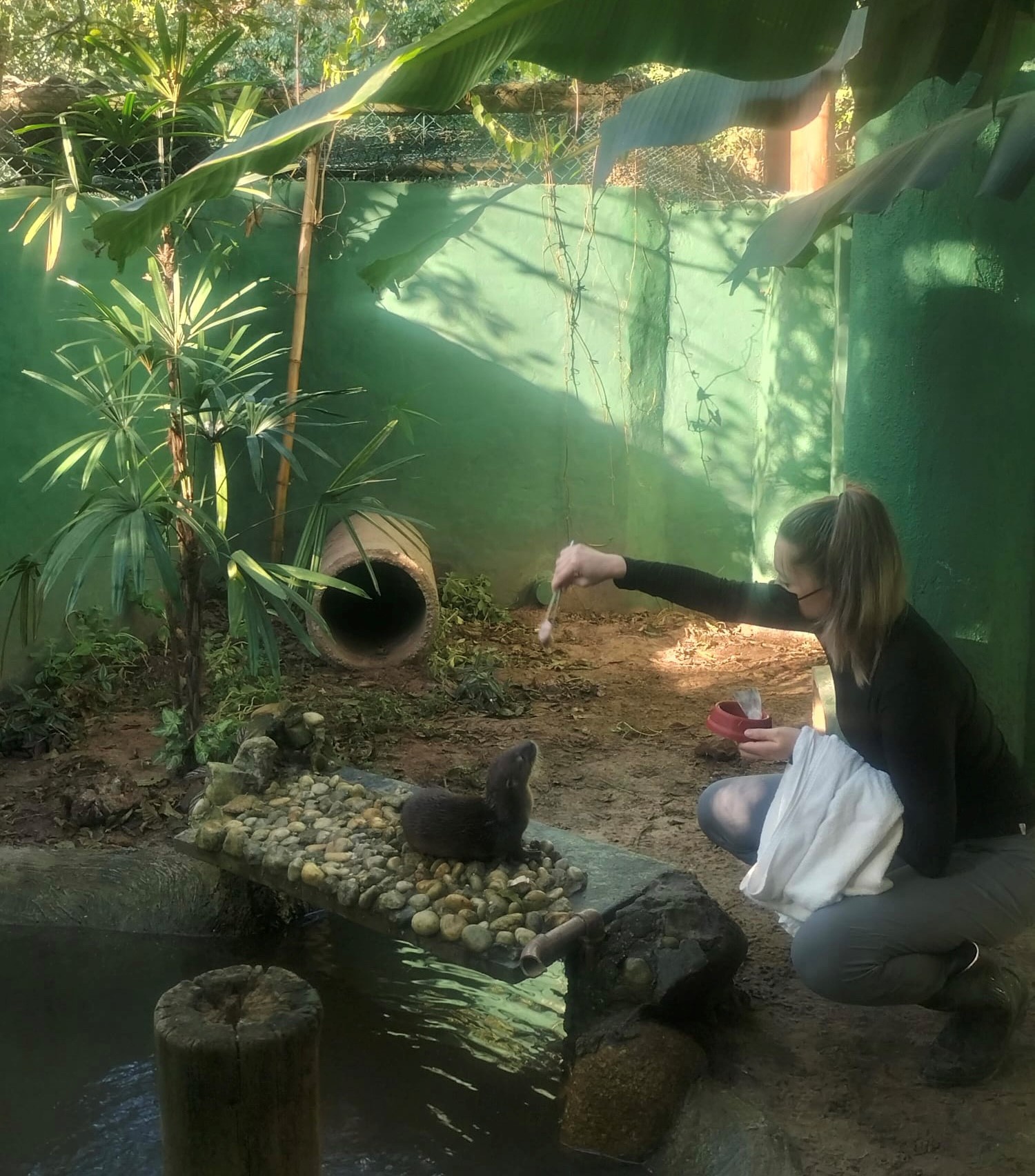
Observing otters
River otters, in addition to being my favorite species, are prone to developing stereotypic behaviors and experiencing high degrees of stress in captivity. Developing allostatic load indices might help us to better address this stress and maintain healthier otters in captivity — like those housed at Projeto Lontra in Santa Catarina, Brazil — an area where the wild otters are
highly threatened and captive populations are especially important. I planned to spend my summer collecting behavioral/environmental data, reviewing medical/lab records, and running a fecal cortisol assay to begin establishing an index.
Enter my research subjects - Freddy, Lucky, Nanã (with her two newborn pups), Cayena, and Cacão. Three times a day, four days a week, I found myself climbing the ladder to the roof that overlooked their enclosures and hiding in the knee-high grasses and shrubs to observe their behaviors. I used an ethogram — a catalog of the various behaviors performed by an animal — and focal animal sampling to record which behavior they were performing every minute for 20 minutes. I made special note of behaviors which are indicative of stress. For Lucky, this often meant a stereotypic swimming pattern, for Freddy, self-mutilatory behaviors, and for Nanã, eating non-food items.
The project was not without its challenges. Despite our efforts, we were unable to secure a laboratory with the capacity to run the fecal cortisol assay during my visit. This was disappointing, but I reminded myself that this research was only meant to be foundational. A silver lining was that Dr. Priscila dos Santos Esteves, staff veterinarian for Projeto Lontra, was still able to use my behavioral observations to guide treatments designed to reduce stereotypic behaviors.
Pups and puppets
The additional free time that resulted from some of these challenges also opened the door to other opportunities. This included helping to hand-rear the orphaned otter pups and assisting with outreach efforts with school children. This made for days spent mimicking the mother otter’s call (a sort of humming sound) when teaching the pups how to swim, and putting on hand-puppet shows promoting otter-positive and general conservation messages.
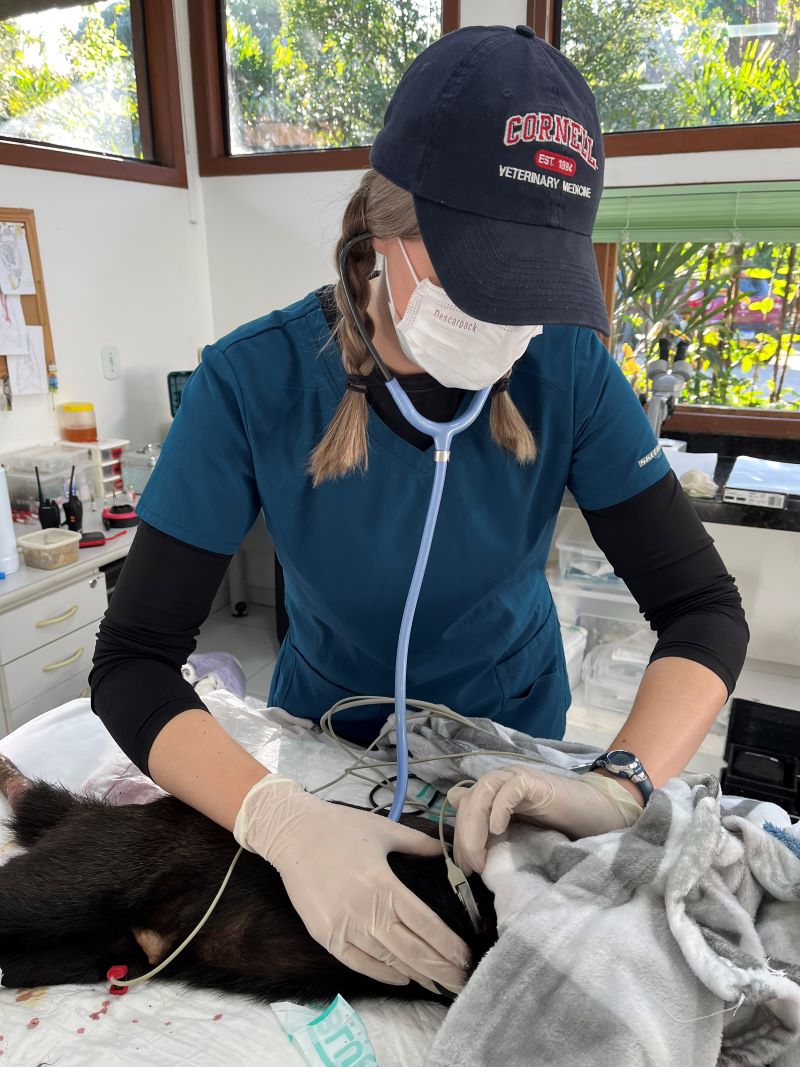
I also assisted the facility with their ongoing research efforts. This included nine+ mile hikes along the coastlines (with some light bouldering) to look for otter prints and spraints (otter feces) to assess wild otter abundance and intensity, and afternoons reviewing camera trap data to analyze wild otter behavior. And, on days where a hike wasn’t in the forecast (literally — there were multiple cyclones during my stay), I was sifting through otter feces to see if diet preferences have changed compared to a study done about 10 years ago.
I also got to participate in a couple of very interesting clinical cases living at Projeto Lontra. One patient was Taz the tayra (a weasel-like animal in the mustelid family) who had chronic bot fly parasitism that caused irritation and secondary infections. I helped Dr. Priscila by monitoring Taz’s vitals while he was under anesthesia and helped with cleaning and debriding his wounds. Another case involved necropsying one of the orphaned otter pups who we sadly lost during my time at the facility. With Dr. Priscila's guidance, I learned about the unique anatomical features of river otters and discovered the cause of death — intoxication and subsequent aspiration due to ingestion of jurubeba (Solanum paniculatum) — a fruit in the nightshade family.
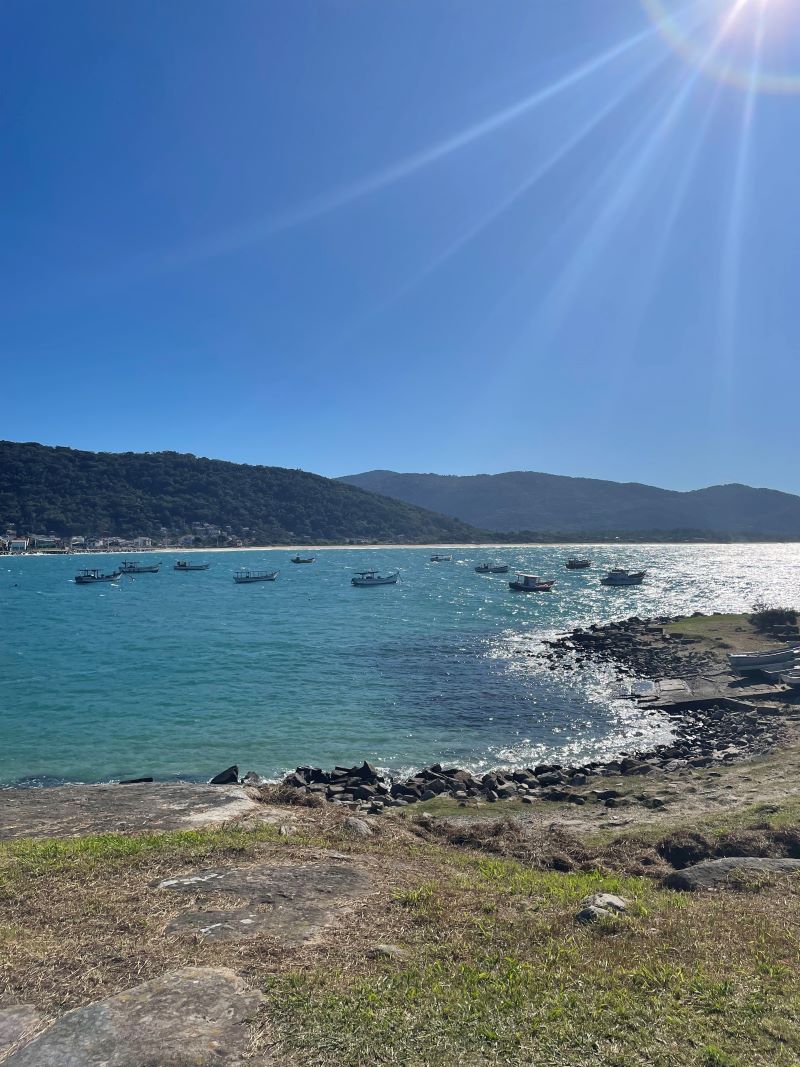
Living like a local
During my stay, Dr. Priscila and the other staff members at Projeto Lontra quickly became friends, and I now consider them to be like family. They introduced me to different aspects of Brazilian culture and ensured I experienced all of what Santa Catarina had to offer. From taking me to Festa Junina (a traditional Brazilian harvest celebration), to family dinners featuring churrasco and caipirinha, to teaching me how to speak Portuguese like a local — they made sure I was included in it all. So, I’m incredibly grateful not only to learn more about otters and other mustelids, but also for the chance to learn about Brazil and Brazilian culture. I know I am and will be a better person and veterinarian because of it.
Prior to this, my veterinary experiences had largely been limited to clinical practice and working alongside other veterinary professionals. My time with Projeto Lontra and Dr. Priscila — engaging in research, veterinary care, husbandry, outreach, and collaboration with the Brazilian government — broadened my perspectives of the environments in which veterinarians can work. As I work toward a career in zoo/wildlife medicine, I’m hoping to build on these experiences and work on interdisciplinary teams for conservation in the future.
I am so thankful for the support of the CVM’s Expanding Horizons Program, my mentors at the Cornell University College of Veterinary Medicine, and Projeto Lontra, who made this experience possible.
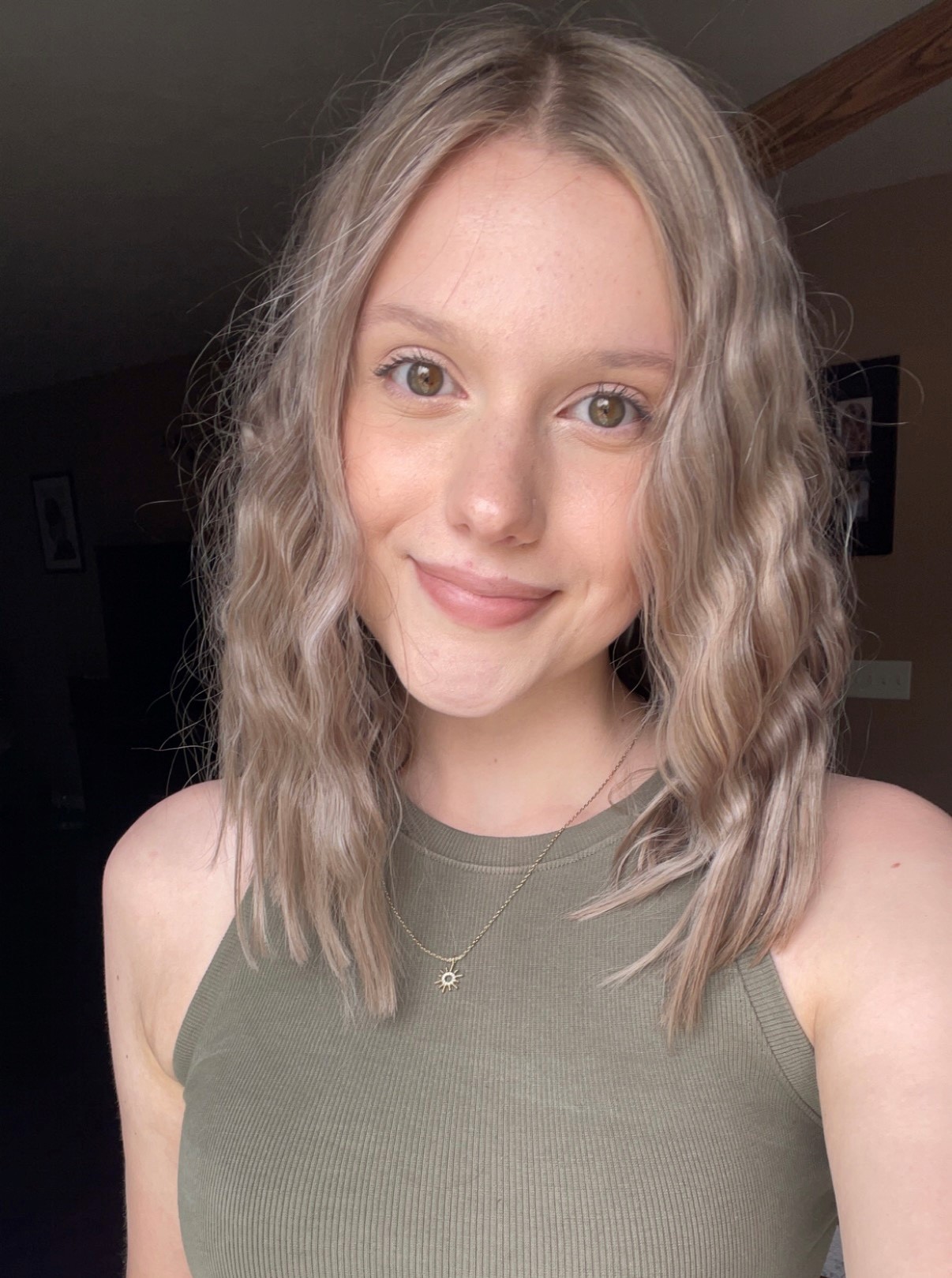
Erin Guntrum, class of 2025, is a third-year D.V.M. student at Cornell University College of Veterinary Medicine. She is from Rochester, NY and received her B.S. in both Animal Behavior, Ecology, & Conservation (ABEC) and Biological Science from Canisius College (now Canisius University) in 2021. She has interests in zoological/wildlife medicine, conservation and research related to behavioral endocrinology and theriogenology.



